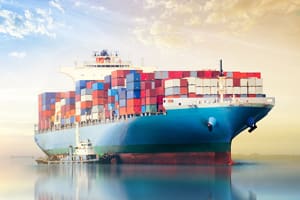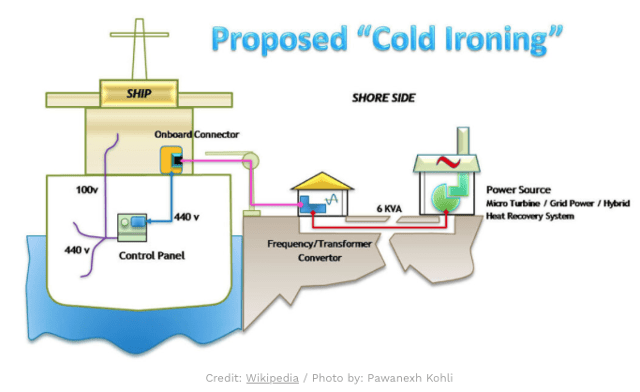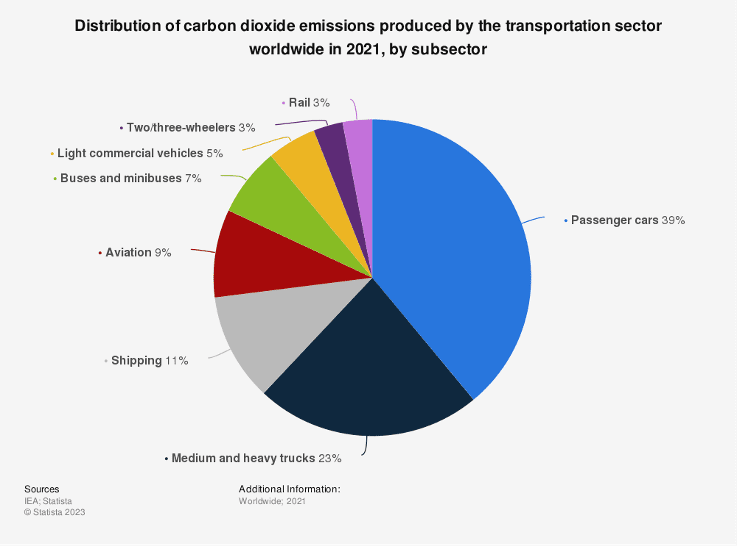Electrification offers cleaner maritime transportation
Electrification of the maritime industry is a promising trend that could revolutionize the transportation industry that sustains the world’s economies.
Note: The views expressed here are solely those of the author and/or interview subject and do not represent positions of IEEE.
 Transportation contributes approximately a quarter of global greenhouse gas emissions. Electrification of large transportation vehicles such as trucks, trains, airplanes, and ships is a promising trend that could revolutionize the transportation industry. While these various modes of transport still rely heavily on fossil fuels, there has been a growing focus on developing electric alternatives.
Transportation contributes approximately a quarter of global greenhouse gas emissions. Electrification of large transportation vehicles such as trucks, trains, airplanes, and ships is a promising trend that could revolutionize the transportation industry. While these various modes of transport still rely heavily on fossil fuels, there has been a growing focus on developing electric alternatives.
According to the International Chamber of Shipping, 11 billion tons of goods are transported by ship each year. In Europe, shipping accounts for 80% of exports and imports by volume. As of 2019, the total value of the annual world shipping trade reached more than $14 trillion. From crude oil to automotive parts to clothing and food, modern life is very much defined by efficient global shipping.
In the maritime industry, electric ships have started to become more prevalent, particularly in the form of ferries and small cargo vessels. With relatively lightweight vessels that travel short distances, it makes sense in transitioning these forms of transportation away from fossil fuels. Indeed, cities like Stockholm, Amsterdam, Seattle, and Hong Kong are actively engaged in migrating to all-electric or hybrid ferry vessels. Even old ferries are being retrofitted to this modern technology, a fitting form of recycling1.
Electrification in maritime involves replacing traditional fossil fuel–powered systems with electrically powered systems, primarily with the adoption of electric propulsion systems and the use of renewable energy sources such as wind and solar to generate onboard electricity. Not only do these new vessels reduce emissions and comply with increasingly strict environmental regulations, but the new technology also brings other advantages like reduced noise and vibration, increased efficiency and improved maneuverability, and lower maintenance costs.
According to Asst. Prof. Dr. Caner Pense from Bandırma Onyedi Eylül University in Türkiye whose dissertation focused on full-electric ferries, “Our findings suggest that the most difficult challenges toward full electrification of the maritime industry are related to technical and political imperatives of the transition phase. In particular, the battery capacities required to sustain safe navigation and operations, especially for larger vessels, is simply too large. Current battery technologies cannot solve this energy-density issue with cost-effective solutions. In addition, the electric infrastructure at major ports will require significant overhaul to sustain the new demand, known as shore power. Lastly, the use of renewable and sustainable energy sources, such as wind and solar energy, is critical. To increase sustainability, the regional power production where major ports are located will need to shift more toward renewable energy sources.”
Dr. Pense says that a successful energy transition to an electrification of this sector requires “a harmonized approach from international organizations, national policy makers, researchers, and the maritime industry is required to overcome these issues.”
Shore power, also known as cold ironing2 or alternative maritime power (AMP), involves connecting ships to onshore electrical grids while they are docked. This allows ships to turn off their engines and rely on shore-based electricity for power, reducing air pollution and noise emissions in port areas. A similar approach is taken at airports where planes, when parked at the gate, save fuel by turning off their engines and connecting to the ground electrical power supply.
The INTERREG METRO (Maritime Environment-friendly TRanspOrt systems) is a project aimed at proposing innovative solutions that improve environmental sustainability in the North Adriatic maritime transport. The project’s goal is an integrated strategy focusing on tackling both ships and ports. By using electrical propulsion and energy-storage systems onboard the ship, coupled with a well-designed recharging infrastructure in the port, the project aims to improve the quality, safety and environmental sustainability of marine and coastal transport services and ports3. A paper on this project was presented at the IEEE 2020 Fifteenth International Conference on Ecological Vehicles and Renewable Energies.
 In addition to these propulsion systems, the shipping industry is also harmonizing its navigational information systems to enhance safety and efficiency with navigation. Collectively known as e-navigation, deploying digital technologies, automation, and data exchange results in more efficient navigation processes. IEEE Recommended Practice for Electrical Installations on Shipboard, Electrical Testing (45.6-2016) provides a consensus of recommended testing practices in the unique field of marine electrical engineering as applied specifically to ships, shipboard systems, and maritime equipment. IEEE has a portfolio of related standards in the maritime industry, which can be found at theMaritime Industry Connection Program.
In addition to these propulsion systems, the shipping industry is also harmonizing its navigational information systems to enhance safety and efficiency with navigation. Collectively known as e-navigation, deploying digital technologies, automation, and data exchange results in more efficient navigation processes. IEEE Recommended Practice for Electrical Installations on Shipboard, Electrical Testing (45.6-2016) provides a consensus of recommended testing practices in the unique field of marine electrical engineering as applied specifically to ships, shipboard systems, and maritime equipment. IEEE has a portfolio of related standards in the maritime industry, which can be found at theMaritime Industry Connection Program.
Both propulsion electrification and e-navigation are key drivers of the maritime industry’s transition toward a more sustainable and technologically advanced future. These initiatives promote environmental stewardship, operational efficiency, and safety in maritime operations. “Our findings indicate that full-electric vessels not only have significant environmental benefits for society, they are also financially sustainable,” says Dr. Pense. “Even today, short voyages with vessels in limited sizes (such as ferries) are great opportunities for implementing full-electric propulsion systems that provide many benefits to both the society and industry.”
As far as the future is concerned, Dr. Pense is optimistic. “There is a new world waiting for young engineers where sustainable development will be the key to success,” he says. “Those who embrace it first will be the pioneers. Therefore, my fellow engineers, be bold, be the first, and don’t be afraid to work in multiple disciplines. You can discover new and better ways to utilize renewable energy. Many, including me, are on this path and only together we can change the world.”
[1] spectrum.ieee.org. (n.d.). Happiness Is a Hybrid-Electric Ferry – IEEE Spectrum. [online] Available at: https://spectrum.ieee.org/happiness-is-a-hybridelectric-ferry
[2] SAFETY4SEA. (2019). Cold Ironing: The role of ports in reducing shipping emissions – SAFETY4SEA. [online] Available at: https://safety4sea.com/cm-cold-ironing-the-role-of-ports-in-reducing-shipping-emissions/
[3] www.italy-croatia.eu. (n.d.). About the Project – METRO – Italia-Croatia. [online] Available at: https://www.italy-croatia.eu/web/metro/about-the-project



